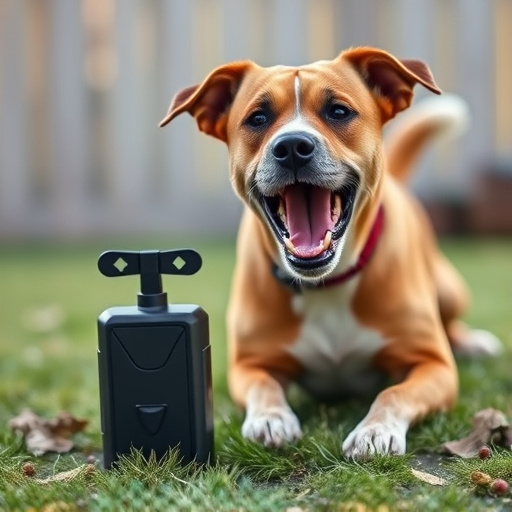Dogs' acute hearing makes them sensitive to high-pitched sounds above 40 kHz, which can be harnessed by FDA-approved dog repellent devices. These devices emit specific frequencies that disrupt dogs' senses, deterring barking or aggressive behavior without harm. When selecting a repeller, consider frequency range (preferably 25-70 kHz), safety (FDA approval), and practical features like range, weatherproofing, size, ease of use, and added benefits, ensuring effective and humane canine intrusion prevention for gardens, patios, and more.
“Curious about effectively keeping dogs at bay? Discover the power of FDA-approved dog repellent devices, designed to address specific behavioral issues without harm. This comprehensive guide delves into understanding canine sensitivity to frequency ranges and the science behind these innovative solutions. Learn essential factors for choosing the right repeller, ensuring your space remains dog-free while promoting peaceful coexistence. Explore the benefits of these devices, tailored to various scenarios, and reclaim your outdoor oasis.”
- Understanding Dog Behavior and Their Sensitivity to Frequency Ranges
- The Science Behind FDA-Approved Dog Repellent Devices
- Choosing the Right Dog Repeller: Factors to Consider for Effective Protection
Understanding Dog Behavior and Their Sensitivity to Frequency Ranges
Dogs, much like humans, have a sensitive perception of sounds, but their hearing is tailored to different frequencies. Understanding this aspect of canine behavior is crucial when considering FDA-approved dog repellent devices. These products often utilize specific frequency ranges to deter dogs from certain areas or behaviors, such as barking or aggression.
Research shows that dogs are particularly sensitive to high-frequency sounds, which can be effectively used in repeller devices. Frequencies above 40 kHz, which are inaudible to human ears, have been proven to startle and repel dogs without causing them harm. This approach leverages a dog’s natural aversion to these silent yet powerful frequencies, offering a humane alternative to traditional repellents.
The Science Behind FDA-Approved Dog Repellent Devices
The effectiveness of FDA-approved dog repellent devices lies in their ability to emit specific sound frequencies that disrupt a dog’s sense of hearing and smell, prompting them to avoid an area. These devices operate on the principle that dogs have more sensitive auditory and olfactory systems than humans, making them receptive to certain high-frequency sounds and scents that can act as deterrents. By targeting these senses, the repellents create an unpleasant experience for dogs without causing them harm.
The FDA-approval process ensures that these devices meet safety standards, guaranteeing they emit frequencies within a range that is safe for both dogs and humans. This scientific approach to dog repellents offers a humane alternative to traditional methods, providing pet owners with a reliable tool to protect their gardens, patios, or other spaces from unwanted canine visitors.
Choosing the Right Dog Repeller: Factors to Consider for Effective Protection
When selecting a dog repeller, several key factors come into play for ensuring effective protection from unwanted canine intruders. Firstly, consider the device’s frequency range; specific devices employ ultrasonic or high-frequency sound waves that are unpleasant to dogs but generally inaudible to humans. These frequencies can be highly effective at deterring dogs from certain areas, especially when they are tuned to ranges known to bother canines (typically around 25-70 kHz).
Additionally, opt for FDA-approved dog repellent devices for safety and reliability. Such products have undergone rigorous testing to ensure they meet established safety standards, reducing the risk of harm to both pets and humans. Other considerations include device range—how far it can effectively deter dogs—and weatherproofing, especially if you’re using it outdoors. Size, ease of use, and portability are also important, as well as any additional features like adjustable sensitivity settings or remote controls that enhance convenience and effectiveness.
When it comes to choosing an effective dog repeller, understanding both canine behavior and the science behind these devices is key. FDA-approved products utilize specific frequency ranges that target dogs’ heightened sensitivity without causing harm. By considering factors like environment, size of your yard, and weather conditions, you can select the ideal FDA-approved dog repeller for comprehensive protection. Investing in such a device not only keeps pets safe but also ensures a harmonious outdoor experience for all.
